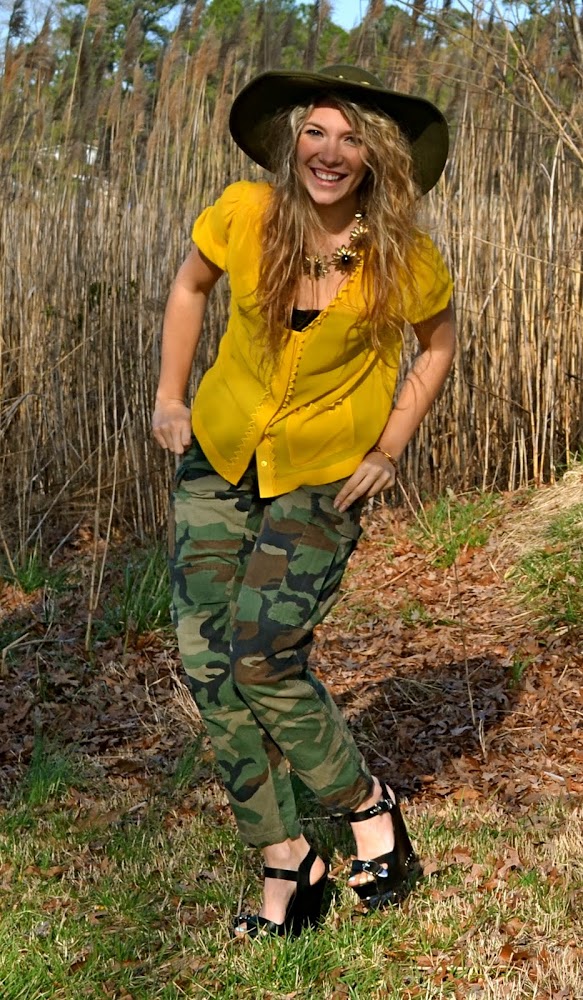
I'll admit I've been spoiled by a week of wearing my brightest prints and gauziest fabrics--it will be quite a challenge to return to April showers and rain slickers.

This ensemble was inspired by the work of Paul Gauguin (1848-1903), a Post-Impressionist painter-turned Primitivist.
Born in Paris, Gauguin lived in Peru as a child. After returning to Paris and starting a family, Gauguin began to yearn to live in a place where he could simplify his life and "live on fish and fruit".

After leaving his wife and family behind, he eventually settled in Tahiti.

Though his lifestyle was criticized, many of his most famous works were produced during his time in Tahiti, where he realized his goal of finding a simple life in which his art could flourish.

The bold hues and primitive elements of the resulting work beautifully reflect the aesthetic of the islands.

The colors and flora of this vintage caftan reminded me of Gauguin's Tahiti paintings, and I decided to wear it out to dinner in Waikiki.

I'm wearing a vintage caftan, beaded necklace purchased in Kailua, vintage leather clutch borrowed from Jess, and Cynthia Rowley x Roxy leather shark tooth sandals.
Thank you to my patient vacation photographer, Jessica Vandagriff, for taking these photos!

In other news, the StyleLikeU book was just released! You can see my photo in the book in the company of dozens of the most inspirational style icons that have been featured on the site. Click here to buy the book on Amazon.
Congratulations to Elisa and the StyleLikeU team!

View my Stylelikeu interview here.
[Gauguin images from mimifroufrou.com, allartclassic.com, jamesbrantley.net, and wholesaleoilpainting4u.com, respectively.]









































